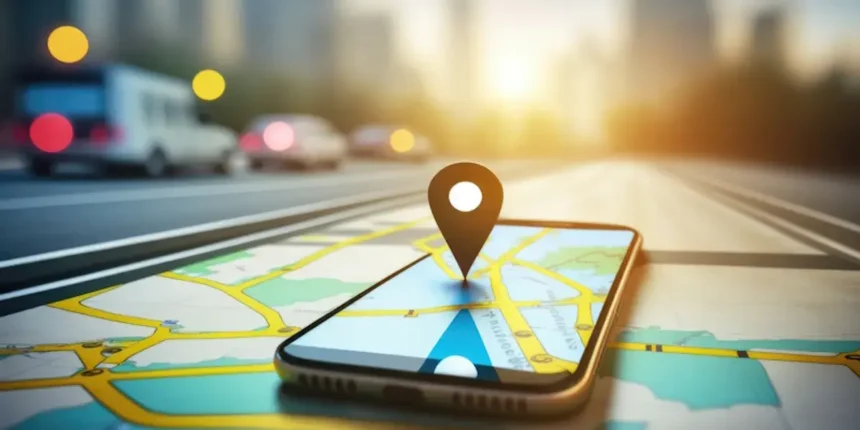Smartphones have become an integral part of our daily lives, and one of their most useful features is GPS (Global Positioning System). Whether you are navigating to an unfamiliar location, checking real-time traffic updates, or tracking your fitness activities, GPS plays a crucial role. Google Maps, one of the most widely used navigation applications, relies heavily on this technology to provide accurate and efficient directions. But how does your smartphone’s GPS work with Google Maps to offer seamless navigation? Let’s explore the interaction between these two technologies and understand how they function together.
Understanding GPS Technology in Smartphones
GPS technology enables smartphones to determine their exact location anywhere on Earth by communicating with satellites orbiting the planet. The GPS system consists of a network of around 30 satellites operated by the US government. When you turn on your phone’s location services, the device communicates with multiple satellites to triangulate its precise position based on the time it takes for signals to travel between the satellites and your phone.
Besides satellites, smartphones also use other methods to enhance location accuracy. Assisted GPS (A-GPS) leverages cellular networks to improve positioning speed, especially in urban areas with tall buildings that may obstruct satellite signals. Additionally, smartphones can gather location data from Wi-Fi networks and Bluetooth signals to further refine their positioning. This combination ensures that users receive highly accurate and real-time location updates.
How Google Maps Utilizes GPS Data
Google Maps is a sophisticated navigation tool that relies on GPS data to function efficiently. When you open the app and enter a destination, it first determines your exact location using GPS signals. The app then uses this data to map out the best possible route based on factors such as real-time traffic conditions, road closures, and estimated arrival times.
Google Maps integrates multiple data sources to improve accuracy. In addition to GPS, it uses crowdsourced data from other users’ smartphones to monitor traffic conditions in real-time. If a significant number of users slow down on a particular road, Google Maps interprets this as congestion and may suggest an alternative route. Moreover, Google Maps uses machine learning algorithms to predict travel times based on historical traffic patterns, ensuring that users get the most efficient routes.
The Role of Cellular Networks in GPS Accuracy
Although GPS satellites provide accurate positioning, smartphones often rely on cellular networks to enhance location accuracy. When a GPS signal is weak—such as indoors or in dense urban environments—smartphones switch to using cell towers to approximate location. This method, known as Cell-ID positioning, works by identifying the nearest cell tower and estimating the phone’s location based on signal strength and tower distribution.
Google Maps also takes advantage of Wi-Fi-based location services to provide even more precise location tracking. When a phone connects to a Wi-Fi network, Google Maps can use the known location of the network to estimate the device’s position. This hybrid approach ensures that users receive accurate directions even when satellite signals are obstructed.
Real-Time Traffic Updates and Data Collection

One of the standout features of Google Maps is its ability to provide real-time traffic updates. This feature is made possible by the combination of GPS data from smartphones and anonymized user reports. When users travel with Google Maps running in the background, the app collects location and speed data to analyze traffic flow.
This information is then aggregated and processed by Google’s algorithms to detect congestion, road incidents, and even weather-related delays. By continuously updating traffic conditions, Google Maps can suggest alternate routes to help drivers save time. The integration of GPS with big data analytics makes Google Maps a highly efficient tool for everyday navigation.
GPS and Indoor Navigation Challenges
While GPS is excellent for outdoor navigation, it faces limitations when used indoors. Buildings, tunnels, and underground spaces can obstruct satellite signals, making it difficult for Google Maps to pinpoint locations accurately. To address this, Google Maps incorporates Indoor Positioning Systems (IPS), which rely on Wi-Fi signals, Bluetooth beacons, and sensor data from smartphones to provide indoor navigation.
For example, in large shopping malls or airports, Google Maps can guide users to specific stores or terminals using IPS technology. By combining GPS with alternative positioning methods, Google Maps ensures a seamless navigation experience even in complex indoor environments.
The Impact of 5G on GPS and Google Maps
The introduction of 5G networks is set to further enhance GPS accuracy and Google Maps functionality. With faster data speeds and lower latency, 5G technology enables real-time communication between devices and mapping services. This means that Google Maps can process location data more quickly and provide even more precise turn-by-turn directions.
Additionally, 5G allows for better integration of augmented reality (AR) navigation features. Google Maps has already introduced Live View, which overlays AR directions on real-world surroundings using the smartphone camera. As 5G becomes more widespread, these AR features will become more refined, offering users a next-level navigation experience.
Conclusion
The seamless interaction between smartphone GPS systems and Google Maps has revolutionized the way we navigate. By leveraging satellite signals, cellular networks, Wi-Fi, and machine learning, Google Maps delivers highly accurate and efficient routing. With advancements like real-time traffic updates, indoor positioning, and 5G connectivity, the future of GPS-based navigation looks even more promising. Whether you’re commuting to work, exploring a new city, or planning a road trip, the combination of GPS and Google Maps ensures you reach your destination with ease and confidence.

